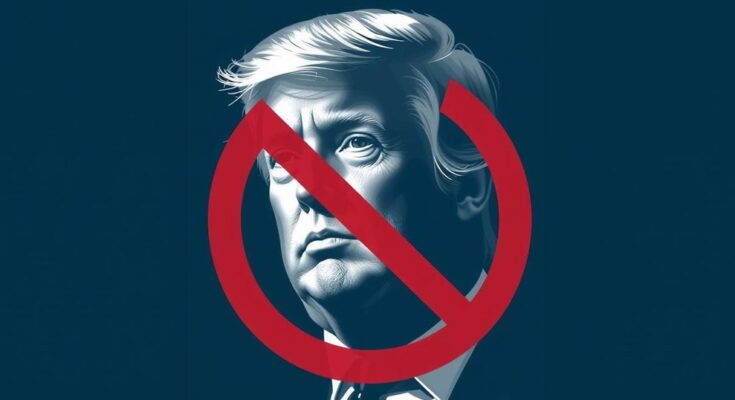Donald Trump’s education policy aims to eliminate “wokeness” from schools, threatening federal funding to enforce bans on teaching gender identity and critical race theory. He proposes substantial incentives for states to adopt his reforms while even contemplating shutting down the Department of Education. As opponents warn of the negative impacts on public education, Trump’s vision depicts an educational battleground reflecting broader political ideologies.
In an ambitious bid to reshape educational landscapes, Donald Trump aims to eradicate what he calls “wokeness” from American schools. His strategy centers on leveraging federal funding to enforce his vision of education, which includes prohibiting lessons that delve into gender identity and structural racism while supporting policies against transgender athletes in girls’ sports. With a promise to cut funding for schools resisting his agenda on these fronts, he envisions a dramatic realignment of educational priorities on a national scale. Trump’s vision portrays schools as a frontline in a political war, suggesting that liberal ideologies have infiltrated classrooms. Across his campaign, he highlighted the need to withdraw federal funds from institutions promoting what he terms critical race theory and gender-related discussions. Critics, however, argue that these claims reflect a distorted worldview, warning that such drastic policy shifts may further harm those students most in need of robust educational support. Trump’s approach includes substantial funding incentives for states that embrace his educational reforms—such as dissolving teacher tenure and establishing universal school choice initiatives. In a bold declaration, he has even contemplated abolishing the U.S. Department of Education, branding it as a stronghold for progressive radicals. As K-12 schools receive around 14% of their funding from federal sources, targeting specific non-compliant districts could compel a broader adherence to his agenda. Leveraging his authority over civil rights enforcement, Trump aims to wield the threat of funding cuts against schools that harbor diversity offices or are alleged to propagate bias. Some supporters speculate that while he might not wield immediate influence across the board, effective intimidation could coerce a shift in policies among hesitant districts. Amidst proposed initiatives, such as fining universities for maintaining diversity programs, Trump’s overarching goal seems fraught with complexities requiring legislative action. In a landscape where educational funding is intricately woven with local tax revenue, any announced changes would rely on a tactful negotiation with state powers. He also posits creating a new online educational institution, funded by taxing affluent university endowments—a classic twist of irony as he targets institutions he feels have been misdirected by leftist ideologies. Nationally, the reaction from educational leadership has been mixed, threading a narrative of hope for collaboration despite potential polarization. While schools anticipate a shifting relationship with Trump’s administration, the reality of aggressive threats to federal funding raises alarm bells. His insistence on curtailing federal oversight clashes with his own initiatives to impose a standardized curriculum reflecting his values, leaving a conundrum between local autonomy and federal control.
Donald Trump’s educational policies have ignited debates across the nation, as he seeks to reframe the narrative around education by targeting perceived progressive influences. With a focus on dismantling diversity initiatives and prohibiting discussions around gender and race in classrooms, his platform strongly resonates with conservative supporters. As the federal government plays an influential role in funding, Trump’s ability to impose changes depends on leveraging financial incentives. Consequently, the implications of such a sweeping agenda could set the stage for a fundamental shift in the educational landscape, pitting federal authority against state and local governance.
Trump’s educational agenda opens a contentious dialogue about the intersection of politics and pedagogy. By aiming to eliminate perceived liberal influences and divert federal funds from non-compliant schools, he seeks to reshape how education is approached nationwide. As he contemplates sweeping changes while negotiating the complexities of educational funding, the potential impacts on students, educators, and the broader educational framework remain to be seen—a pivotal moment in U.S. education history.
Original Source: apnews.com



